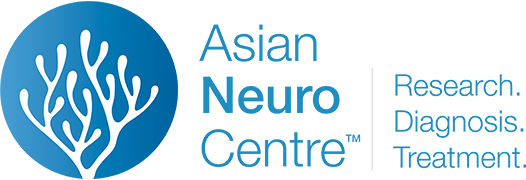- Have any questions?
- 911 12345 29
- info@asianneurocentre.com
Childhood Migraine: An Undiagnosed Condition in Children by Dr Navin Tiwari, Neurologist in Indore

FOOD TRIGGERING MIGRAINE-article by Dr Navin Tiwari, Renowned Neurologist , Indore
February 12, 2019
लकवा व ब्रेन स्ट्रोक को समझें
February 19, 2019Childhood Migraine: An Undiagnosed Condition in Children by Dr Navin Tiwari, Neurologist in Indore

Childhood Migraine: An Undiagnosed Condition in Children Article by Dr Navin Tiwari, Director and Consulting Neurologist at Asian Neuro Centre Indore
Children’s migraine symptoms are unique and may not respond to adult treatment methods. Symptoms of childhood migraine are often overlooked by their parents, in their considerations mostly headache are because of dietary deficiency, refractive errors, study burden and sometimes functional or habitual headache. Ignorance on the part of parents results in flaring of childhood migraine. It is seen that most of parents are even not aware of childhood migraine entity. About 70 percent of children with migraine have family history of migraine; mostly childhood migraine is genetic in nature.

If you’re a parent who suffers from migraine, it’s especially important to be mindful of signs that your child or children may be exhibiting migraine symptoms. Migraine attacks can be as debilitating and painful for children as they are for adults. Neglecting the headache may complicate the situation and child who suffers from headaches may end up socializing less or struggling with their schoolwork, among other daily activities.
DISEASE BURDEN
Migraine is a common cause of undiagnosed headache in children. Various Studies has showed that around 65% of children aged between 7 and 15 experience headache. Around 1-2% of 7-year-olds and 3 % of 9-year-olds have childhood migraine; more than 5% of 15-year-olds are affected. 10% of school children suffer from migraine. 2.75 million School days are missed each year due to migraine. It is seen that migraine affects both boys and girls equally until puberty, after which migraine is more prevalent in girls. Severe pain and vomiting mean that children often have to remain at rest and are unable to participate in normal daily activities. If such severe attacks of headache are frequent, migraine can have a significant detrimental effect on schooling and behaviour.
HOW TO IDENTIFY CHILD HOOD MIGRAINE
It can be challenging to determine if a child is suffering from migraine, or another ailment, because their symptoms, and the way they react to headaches, often differ from the symptoms and reactions of adults.Migraine in children differs from migraine in adults in several ways. In children headache typically affects the whole head, rather than one side, Headache may be only a minor symptom and may be absent, Vomiting and/or abdominal pain are prominent, Attacks are shorter, sometimes lasting less than an hour. Apart from above mentioned symptoms children may experience abdominal migraine, which can cause pain in their abdomen, nausea and cyclical vomiting. Even colic in infants has been linked to migraine later in life, indicating that colic may be the earliest sign of migraine attacks.
There is no diagnostic test for migraine, so diagnosis entirely depends on the history and pattern of attacks. A headache diary is an invaluable aid both for diagnosis and management. Recurrent attacks of headache with nausea or vomiting or abdominal pain, with complete freedom from symptoms between attacks in an otherwise healthy child, could be probably migraine. Some children yawn for a few hours before the headache starts or may experience migraine aura, an hour before the headache starts. Attacks may last 2-3 hours; parents and carers are often surprised at how quickly children recover
IDENTIFYING TRIGGERS FOR MIGRAINE
As discussed earlier, mostly childhood migraine are genetic, so most of the triggers are same as their parents. Documenting patterns during headache episode can also help kids identify and avoid their triggers, which tend to be similar to triggers in adults. By paying attention to specific food items that might correlate to migraine attacks, like caffeine or chocolate, ice creams, preserved food parents can teach their children to avoid them. Stress is another very common trigger. Now a days even a young child experience stress related to their family, school and friends.
HOW TO TREAT CHILDHOOD MIGRAINE
Management begins with prevention. A high index of suspicion is always required regarding the symptoms of childhood migraine. Parents are needed not to overlook any symptoms related to headache and abdominal pain, so that diagnosis is made early.If child is experiencing the symptoms like headache , nausea , vomiting or abdominal pain parents should contact a neurologist to seek a proper diagnosis and treatment. To alleviate symptoms from frequent, recurring migraine attacks, analgesics can be administered to children. Your child’s doctor will determine if that medication is appropriate for your child’s age and the severity of his or her symptoms. Relax your child by providing your child reassurance ,understanding and creating a calm, quiet and healthy environment that suits your child for the duration of his or her migraine,it can provide tremendous comfort during what may be a painful and scary experience.
Remember, childhood migraine is unique, and it requires a unique treatment plan with the aid of neurologist who understand and have expertise in the diagnosis and treatment of childhood migraine.
